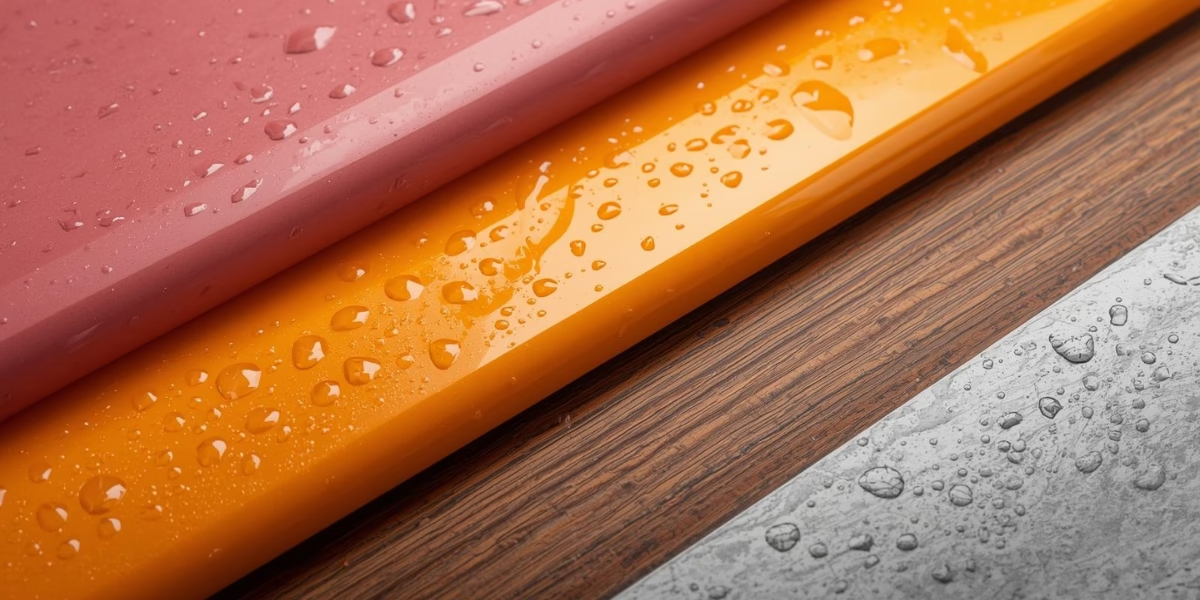Surface protection is a global requirement, spanning from architectural structures to automotive finishes. Coating technologies must balance durability, appearance, and environmental performance. Among available technologies, acrylic coatings stand out for their exceptional color retention, gloss stability, and weatherability.
From skyscrapers in humid climates to automobiles exposed to direct sunlight, acrylic coatings deliver long-lasting performance with minimal maintenance. This article examines their unique properties, applications, and sustainability contributions in global industries.
What Are Acrylic Coatings?
These coatings are formulated using polymers derived from acrylic or methacrylic acid. They form transparent, tough, and flexible films that adhere well to multiple substrates. Their popularity arises from:
- UV stability, preventing color fading under sunlight.
- Water resistance, protecting surfaces in humid and rainy conditions.
- Gloss retention, maintaining fresh appearance for extended service life.
These features make acrylic a preferred solution across industries that demand both aesthetics and durability.
Key Properties of Acrylic Coatings
Weatherability
One of the strongest attributes of these coatings is their resistance to weathering. Continuous exposure to sunlight, rain, or snow has minimal impact on their clarity and finish. This performance is vital in:
- Architectural façades where exposure is constant.
- Vehicles subjected to diverse climates.
Color and Gloss Retention with Acrylic Coatings
Fading or yellowing reduces the visual appeal of coated surfaces. Acrylic coatings resist these effects, offering superior gloss stability. Automotive paints, in particular, rely on acrylic systems to maintain showroom finish even after years of exposure.
Water and Moisture Protection
Moisture often leads to blistering, cracking, and substrate damage. By forming a continuous film, acrylic coatings prevent water penetration, ensuring protection for wood, concrete, and metal.
Flexibility with Acrylic Coatings
Surfaces expand and contract due to temperature fluctuations. Acrylic coatings provide the flexibility needed to adapt without cracking while maintaining excellent adhesion.
Environmental Compliance
Waterborne acrylic systems have lower volatile organic compounds (VOCs), making them a preferred choice in markets driven by strict environmental regulations.
Types of Acrylic Coatings
Solventborne Acrylic Coatings
- Offer faster drying times and higher film build.
- Applied in industrial settings where durability and performance are critical.
Thermosetting Acrylic Coatings
- Cross-link during curing for enhanced chemical and abrasion resistance.
- Frequently used in powder coatings and automotive clear coats.
Applications of Acrylic Coatings
Architectural Sector
Buildings face constant exposure to UV rays, rain, and pollution. Acrylic coatings provide:
- Long-term weather resistance.
- Protection against dirt pickup.
- Sustainable, low-VOC finishes.
They dominate exterior paints and protective coatings for both residential and commercial structures.
Automotive Industry
Vehicles require coatings that balance durability and appearance. These coatings offer:
- High gloss retention.
- Resistance to UV degradation.
- Compatibility with metallic and pearlescent pigments.
Their role in topcoats ensures that automotive finishes remain visually appealing and protective.
Industrial Applications
Pipelines, equipment, and storage tanks benefit from these coatings due to their corrosion resistance and surface stability. They are also applied in machinery for their protective and decorative qualities.
Wood and Furniture
For furniture and flooring, these coatings deliver scratch resistance, clarity, and moisture protection. Waterborne formulations support eco-friendly practices in the furniture industry.
Marine and Aerospace
Aircraft and marine vessels face extreme environments. Modified coatings ensure UV stability and minimize maintenance costs in these demanding sectors.
Performance Comparison: Acrylic vs Other Resins
- Acrylic vs. Polyurethane: Polyurethane excels in hardness and abrasion resistance, while acrylic outperform in UV and gloss retention.
- Acrylic vs. Epoxy: Epoxies provide superior adhesion and chemical resistance, but these coatings remain more stable outdoors.
- Acrylic vs. Alkyd: Alkyd resins may yellow over time, whereas acrylic coatings maintain clarity and brightness.
This comparison explains why these coatings dominate architectural and automotive sectors, where weatherability and aesthetics are priorities.
Formulation Insights for Acrylic Coatings
Advances in formulation science continue to enhance acrylic performance:
- Hybrid Systems: Acrylic-polyurethane blends combine weatherability with abrasion resistance.
- Nano-Additives: Improve scratch resistance and barrier properties.
- Pigment Technology: Ensures higher opacity and better color stability.
- Cross-Linking Agents: Boost chemical resistance in thermosetting acrylics.
Through formulation innovation, these coatings adapt to global standards and industry-specific requirements.
Sustainability in Acrylic Coatings
Global industries are focusing on reducing environmental footprints. These coatings align with these trends by offering:
- Low-VOC waterborne options.
- Durability, reducing recoating frequency and waste.
- Recyclable packaging and eco-friendly manufacturing processes.
By choosing sustainable acrylic coatings, industries meet both performance needs and environmental regulations.
Concluding Thoughts:
The dominance of acrylic coatings across architectural, automotive, and industrial applications highlights their unmatched weatherability, gloss retention, and durability. Their ability to resist UV degradation, maintain vibrant colors, and comply with environmental standards ensures their continued global adoption.
As innovations in formulation and sustainability expand, this will remain at the forefront of protective and decorative technologies. From skyscrapers to automobiles, their role is central in shaping the future of high-performance coatings worldwide.
COMPANY INFO
Website: www.crestresins.com
Phone: +91 9879233188
Email: enquiry@crestresins.com
Address: 605/A, 6th Floor, Tower D, Times Square Grand Office, Sindhubhavan Marg, Near Taj Hotel, Ahmedabad, Gujarat - 380059

